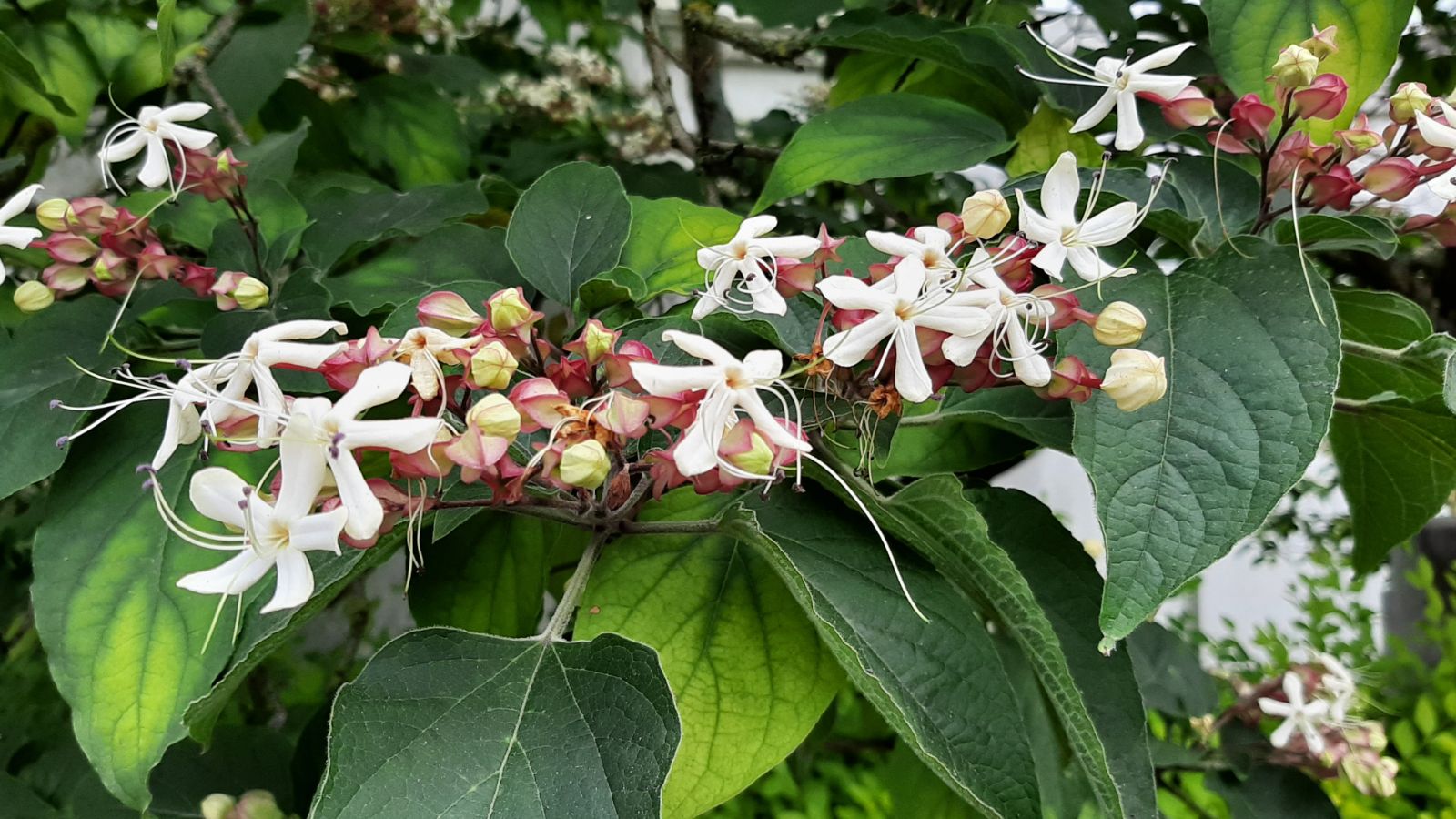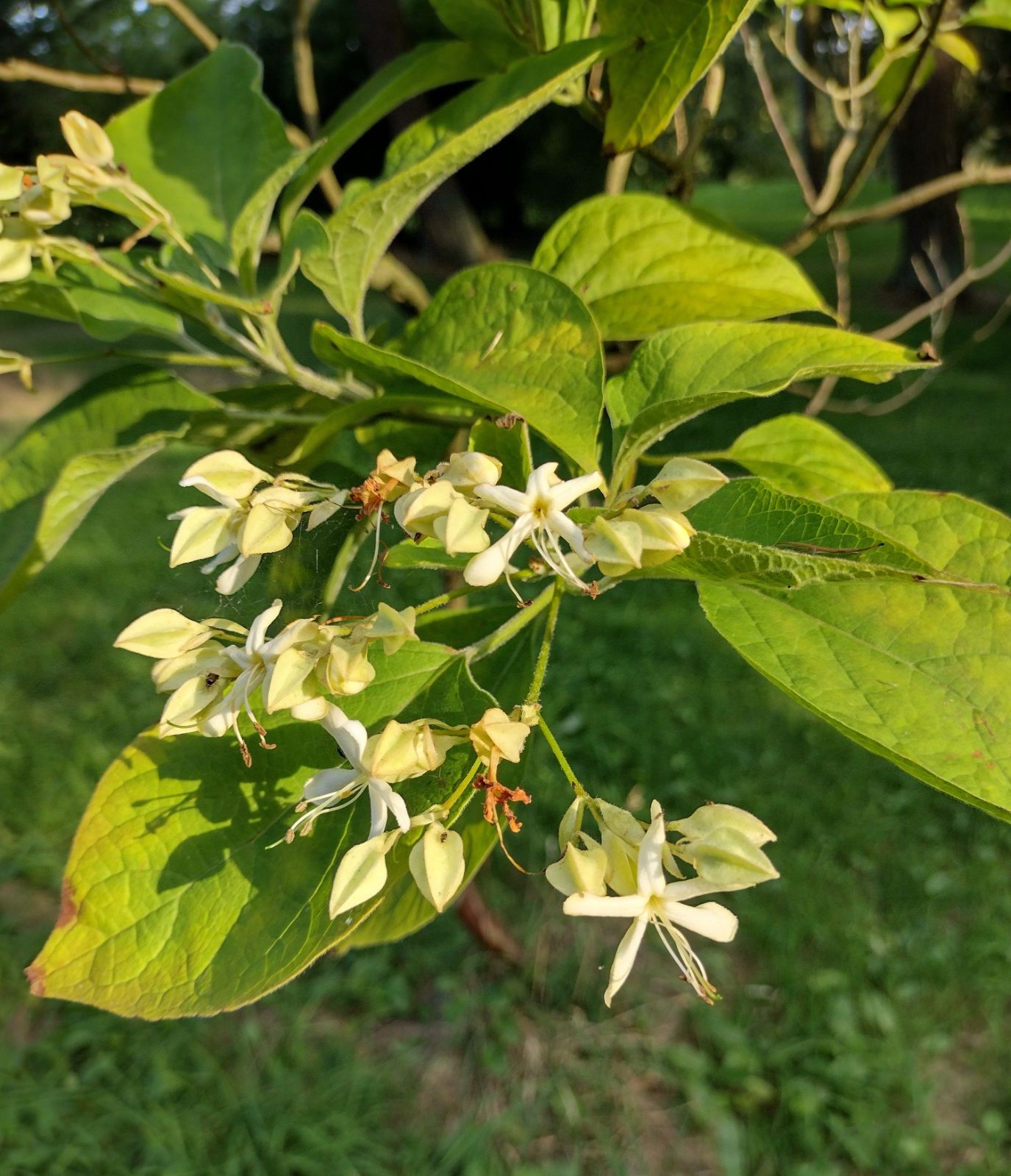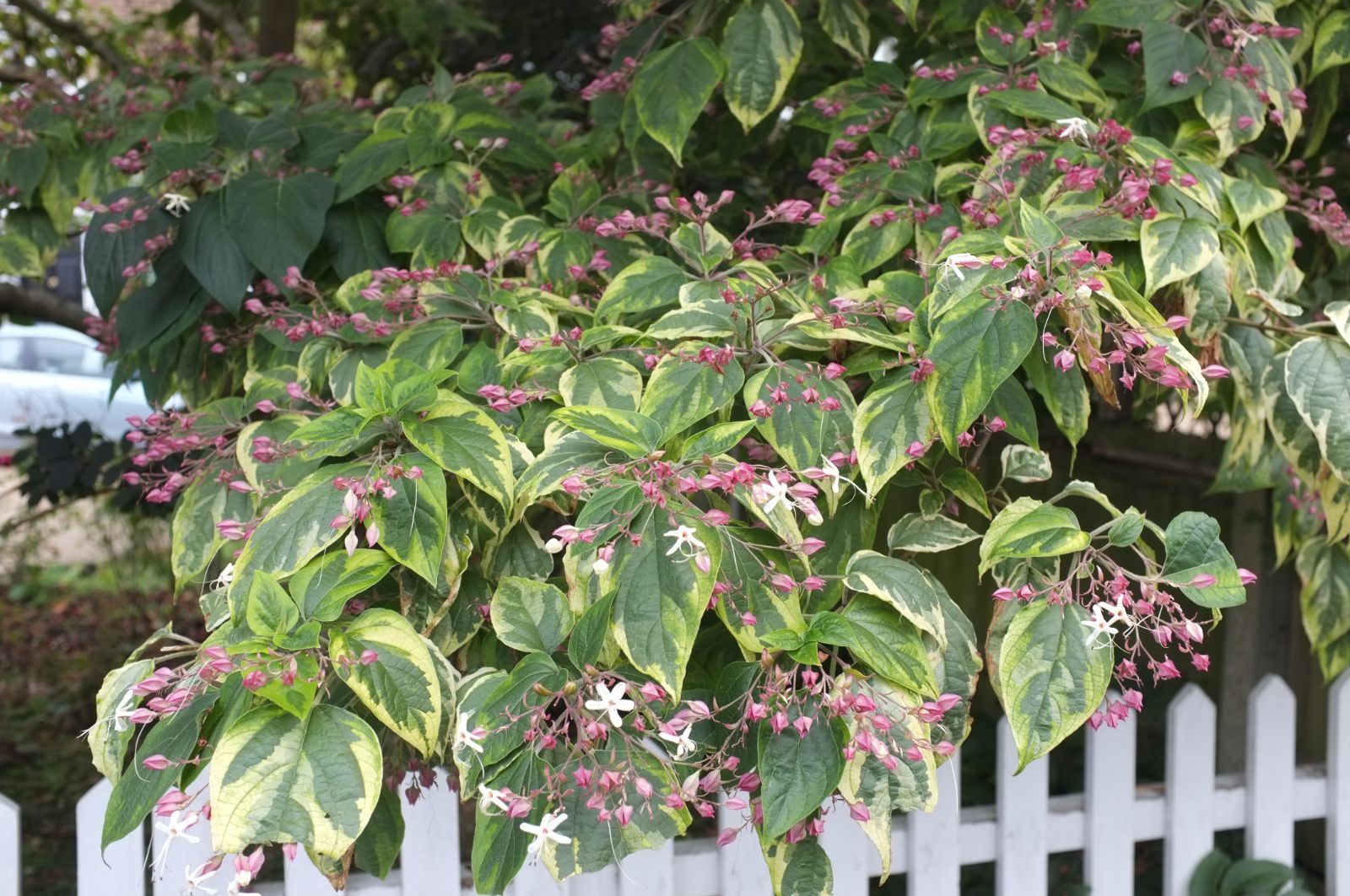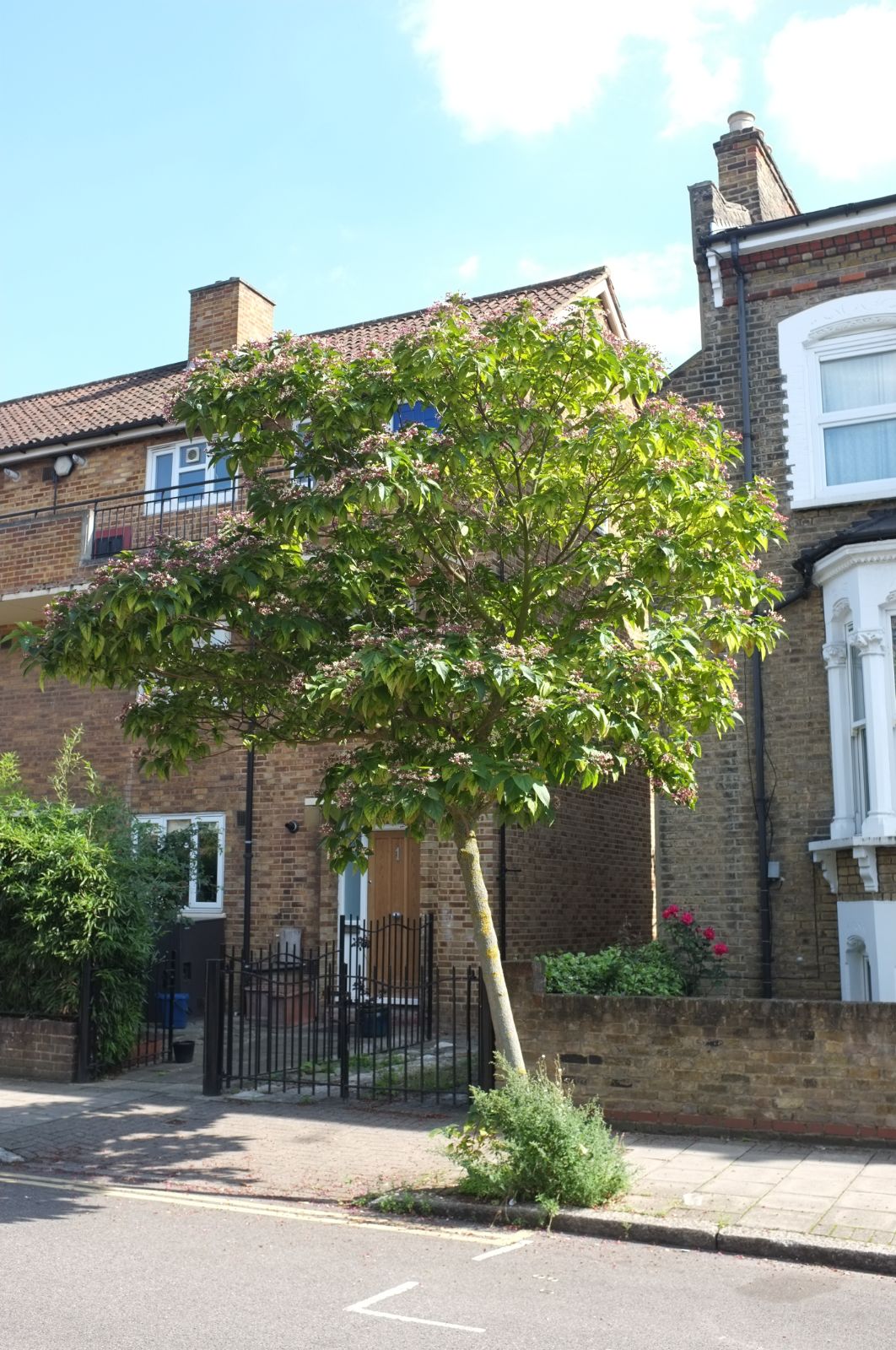Clerodendrum trichotomum
Credits
Article from Bean's Trees and Shrubs Hardy in the British Isles
Recommended citation
'Clerodendrum trichotomum' from the website Trees and Shrubs Online (treesandshrubsonline.
Genus
A deciduous, small tree 10 or 20 ft high, of bushy, rather sparse habit; branches very pithy, downy when young. Leaves variable in size, and considerably larger on young plants than on adult ones; in the latter they are ovate or oval, 4 to 9 in. long, 2 to 5 in. wide, occasionally toothed, soft, with scattered down beneath, and flaccid; stalks downy, 1 to 4 in. long. The lower leaves are sometimes deeply two- or three-lobed towards the apex. Flowers fragrant, produced from July to September in long-stalked cymes from the axils of the uppermost leaves, the whole forming an erect inflorescence 6 to 9 in. across. Corolla white, 1 to 11⁄2 in. across, the base tubular, expanding at the mouth into five spreading, oblong, narrow lobes. Calyx reddish, 1⁄2 in. long, inflated, five-angled, and five-lobed. Fruit bright blue, ultimately black, about the size of a pea, surrounded by the persistent crimson calyx whose lobes have become fleshy and spreading. Bot. Mag., t. 6561.
Native of Japan and China, and a very handsome late summer-flowering tree. The leaves have a heavy unpleasant odour when crushed. It is quite hardy at Kew, and likes an open, loamy soil. The pithy branches are very apt to die back in winter. It is easily increased by root-cuttings, or by the young suckers which frequently spring from the roots.
var. fargesii (Dode) Rehd.
Synonyms
C. fargesii Dode
A vigorous, deciduous shrub, of very leafy habit; young wood greyish, almost glabrous. Leaves purple-red when quite young, afterwards glossy green on both sides, with scattered hairs on both surfaces. Calyx green, ovoid, conspicuously five-angled, and with five-pointed lobes, downy on the ridges. Fruit about the size of a pea, porcelain-blue, surrounded by the five fleshy, reflexed lobes of the persistent calyx which become pink with age.Native of Szechwan, China; introduced to France by Père Farges, and first raised by Maurice de Vilmorin in 1898. It differs in the paler, more slender shoots; smaller, brighter green, less downy leaves; in the green, not red, young calyx; and paler blue fruits. It is inferior to the type in beauty, but is probably hardier and does not die back. The leaves have an unpleasant odour when crushed. It is not sharply marked off from typical C. trichotomum and is really no more than a phase of that variable species.







